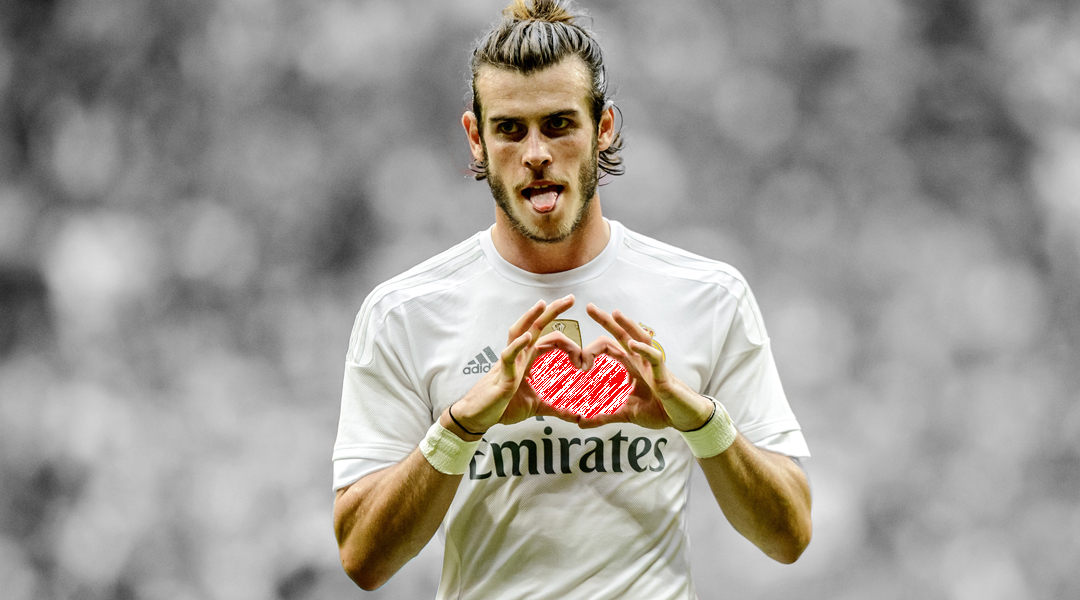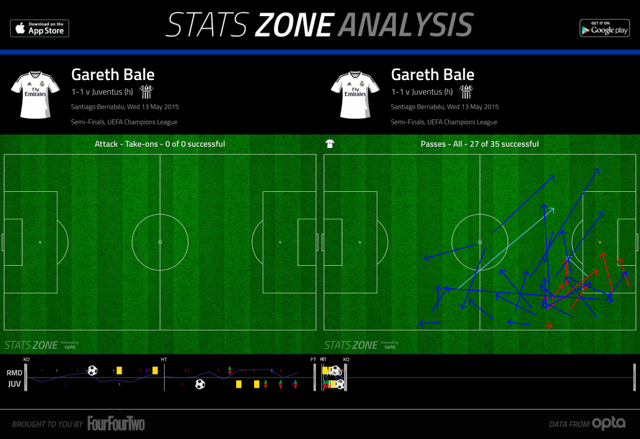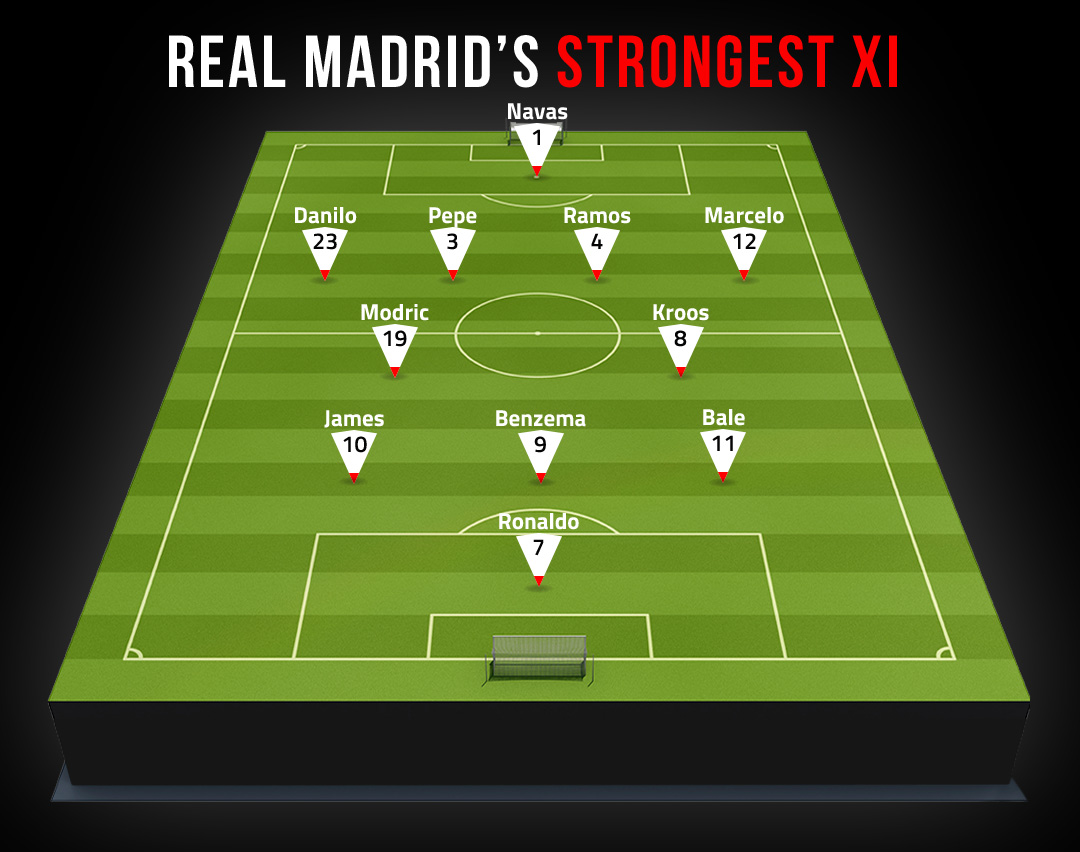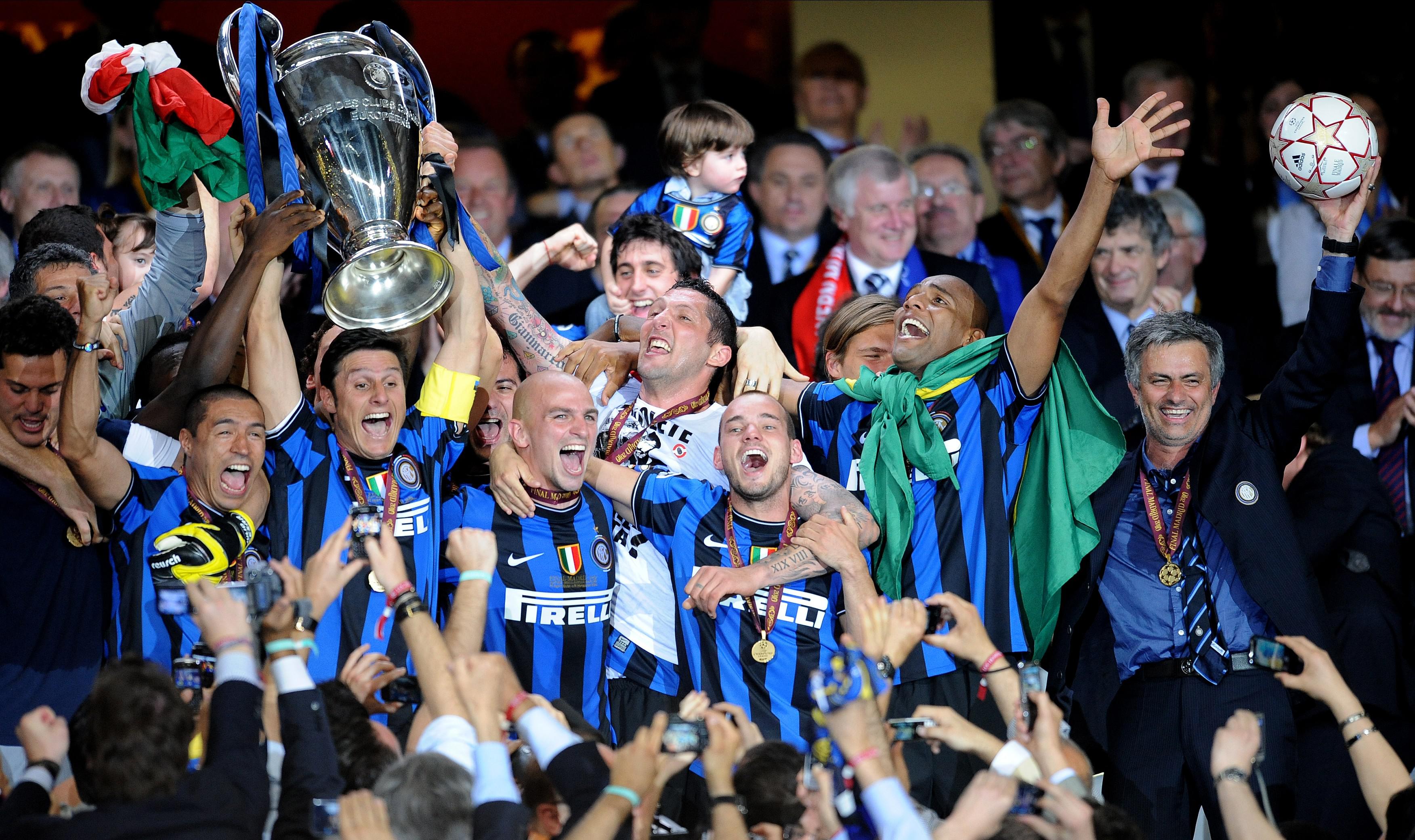How Rafa Benitez can turn Gareth Bale back into a world beater this season
The Welshman wasn't at his best for the former European champions last season, but Kiyan Sobhani thinks he's cracked the way to do it this time around...

In his first season, Bale somehow met the expectations of his grossly exaggerated price tag
In Real Madrid's star-studded squad, standing out from the pack is a strenuous task, even for the most expensive player in the world. In truth, there is only one man who can separate himself from the rest in this constellation of stars, and that’s Cristiano Ronaldo. But while the Portuguese is the undisputed Batman of Madrid, you’d be hard pressed to figure out just who Robin would be.
From front to back, almost everyone in Real’s starting XI could be a caped crusader at a different club, but there's one man in particular who Rafa Benitez has his eyes on to lead this team in the long-term when Ronaldo retires: Gareth Bale.
In his first season, Bale somehow met the expectations of his grossly exaggerated price tag, scoring some incredible goals, including two championship-winning ones en route to Real Madrid’s Double. Twenty-two goals and 16 assists. It could have been more had he not suffered various injuries throughout the season.

But few would have called what happened the following season when Bale slumped. After a promising pre-season and a year in Spain under his belt, the Welshman suffered on account of the improved tactical schemes of opposing defences. No longer did he have the free space that he once enjoyed against the La Liga minnows. Goals like this became sparse.
What went wrong
There are two distinguishing traits in Bale’s arsenal that set him apart: blistering pace and sharp shooting. You’d struggle to find a better shooter in open play from 30-40 yards than the ex-Spurs man.
Sure, Ronaldo and Messi score more goals from outside the box (Messi hit 4 and Ronaldo 5 last season in La Liga, while Bale only knocked in one), but they also shoot more from distance too – and played about 500 more minutes than Bale last season.
Get FourFourTwo Newsletter
The best features, fun and footballing quizzes, straight to your inbox every week.
But Bale’s biggest problem is that defensively, Real Madrid’s opponents are playing more compactly, closing down channels and doubling up on the wings. That forces the Welshman to either gamble with an attacking move, or play it back safely to Dani Carvajal or one of the deep-lying midfielders.
Against Juventus, Bale was crucified for not converting one of his many chances – albeit those were difficult, a point which was never really emphasised.
In Real Madrid’s biggest match of the season – a 1-1 draw against Max Allegri's Italians at the Bernabeu which ultimately knocked the defending champions out of Europe – Juventus played a balanced and compact game that made life difficult for the former Tottenham winger.
As Bale’s dribble is more reliant on pace and power rather than that intricate glue-like elegant manoeuvring that Messi relies on, once he’s quickly closed down his powers are taken away from him. Aleggri recognised this and the Old Lady did everything they could to take the 26-year-old out of the game.

But what Juventus did that night was in no way unique: other teams have figured out that the best way to stop Bale's lethal runs is to overload help on the wings. Limited space means limited opportunities. Thus, one of Bale’s strengths – shooting from distance – became a smaller part of his game.

Last season, 37% of Bale’s shots came from outside of the box – down 6% from the previous year. Subsequently, his numbers in both major attacking categories – goals and assists – also dropped.
But there is an important point to be made: greatness eventually trumps everything – including tactical schemes that opposing defences throw at you. What hasn’t been discussed at length is how conducive Bale can still be when he’s closed down. In the matches above he still found space, created dangerous chances and tracked back. The last trait stems from habits formed in his days at left-back earlier in his career.

No successful take-ons, but solid distribution from the right flank. Bale was very active in creating chances despite his opponents doing a good job cutting them out.
Why it needs to change
The fact that Real Madrid have so many weapons from so many positions on the field is always going to be beneficial to Bale. It means that no matter how well-quipped defensive lines are to contain Bale’s offensive prowess, they will inevitably collapse if he becomes more consistent with his decision making.
Specifically, he needs to realise that bursting down the flank with every possession will most likely end up wasteful if defenders are packing the wings. Once Bale cuts inside, his options open up tremendously. He can either play a quick one-two, find space to shoot or swing it to the opposite flank.
The last option is something Bale is tremendously good at, and it’s one that completely catches defenders off guard – it takes time to transition from one side to the other when the focus is on doubling up on Bale.

Once Bale cuts inside, good things happen
There are other ways Bale can contribute. Packing the defensive wings is a gamble that defenders take, because once Bale recognises that the switch is on, they have to scramble to the far side.

Ronaldo has time to get a shot off which grazes the bar. A great opportunity is created seemingly out of nothing, but such is the effectiveness of a cross-field pass when the defensive line is shifted to close down Bale.

Contributing in other ways: tracking back to make an excellent tackle on Neymar.
But consider these basic footballing attributes: work ethic, tackling, switching the play – all traits that any world-class footballer can manage easily. They exist abundantly.
What’s important for Rafa Benitez to resolve is how to get more out of Bale; enough to justify his price tag. The onus is on the Spanish tactician to create an offensive scheme that proactively creates space for Bale to make his authoritative runs and launch his dynamic long-range cannons. Thus far, Benitez is on point.
How to fix it
The proposed system: a line-up which pushes Ronaldo to an advanced striker position, which in turn enables Bale to shift over to his favoured left side – that has created the fondest memories of Bale, could be of great benefit to the Wales talisman.
In that Copa del Rey final against Barcelona, Ronaldo was ruled out with an injury and Bale thrived on the left wing. That's not to say the duo can’t play together, because they can.
Real Madrid’s rampant performance in Munich in the 2013/14 season came at the hands of Ronaldo and Bale running riot on the wings. However, the game is always evolving, and a juggling of positions by Benitez could bring out the best in Real Madrid’s fearsome attack again.
In reality, Ronaldo’s transition to a more advanced central forward position is an easy one. He thrived in an advanced role last season and his shots from outside of the box dropped significantly, while his shots from inside the six-yard box rose from the previous year. He’s more efficient than Karim Benzema when it comes to latching onto through balls as he can get in behind defences and accelerate quickly, and he can finish better than Benzema too. Not to mention how good he is at finishing crosses inside the box with his head.
Consequently, Bale’s transition to the left would allow James Rodriguez to slide to the right, the Colombian's best position and the one that earned him his name in Monaco.

In reality, Real Madrid will shift and evolve minute-by-minute as the games progress. It’s not as stagnant as it looks on paper. Judging on the pre-season games in Australia and China, Benitez can line up with Bale on the left and Ronaldo up top with Benzema in a deeper role, but all three players have the freedom to roam.
On one possession Bale will swing a cross in to Ronaldo from the left, and on another he’ll be on the right with Ronaldo overlapping. This kind of system is well-suited to the players that Real Madrid have.
It’s one that keeps the defenders guessing and makes it difficult to predict. Bale is too good a player to be limited to running into defenders on the flanks, and Real are too good a team to stand around and watch him do that. The good news is that Benitez has already made strides to fix this problem.
